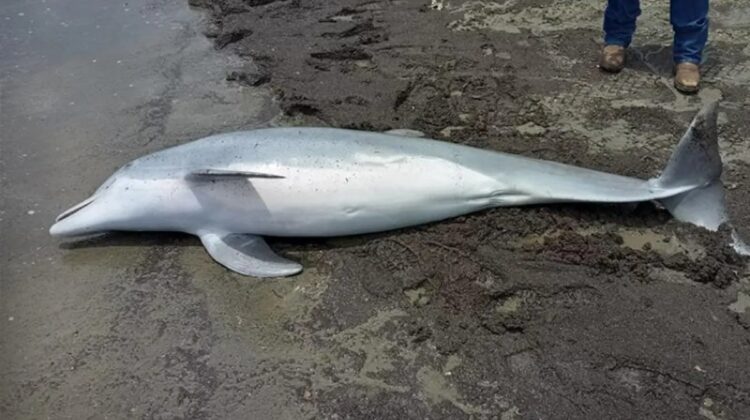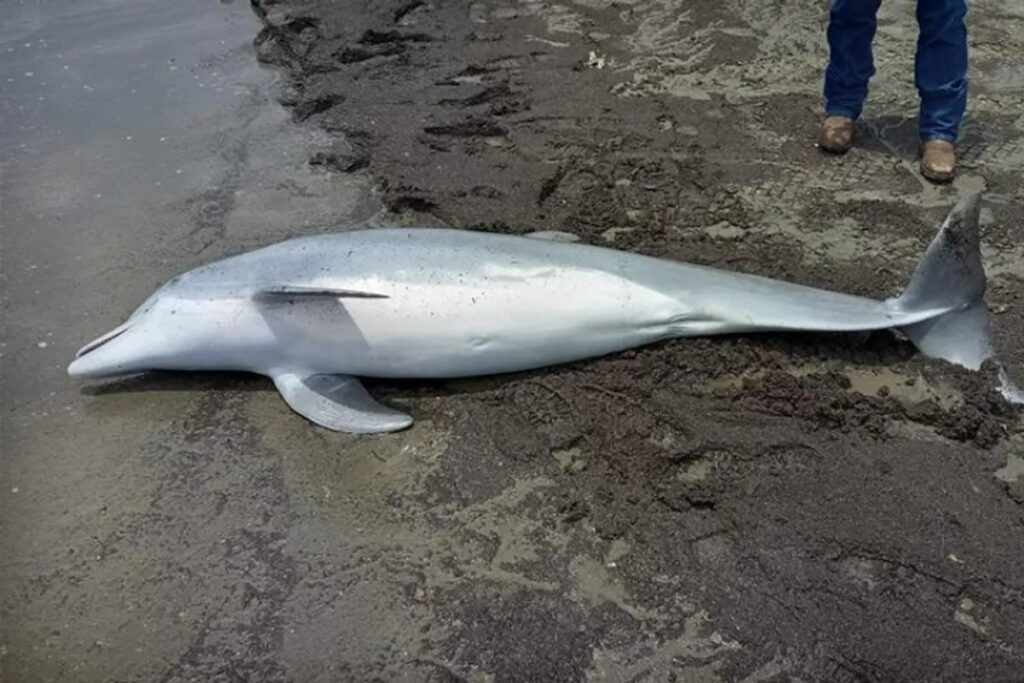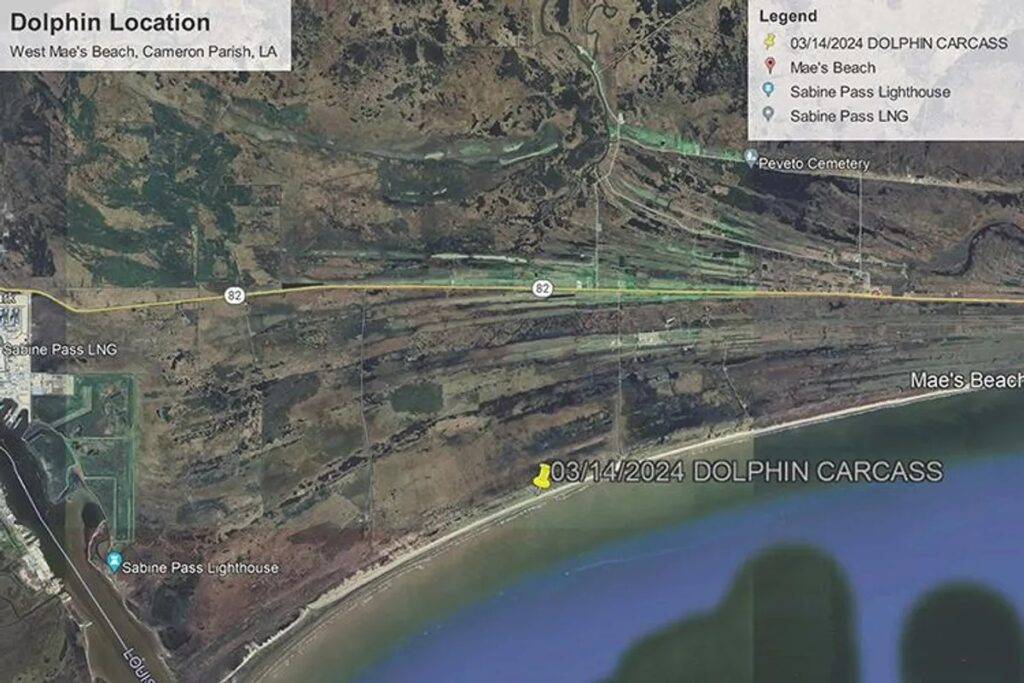
Bullets were found in the dolphin’s brain, spinal cord, and heart.
Tragedy struck on the serene shores of West Mae’s Beach in Cameron Parish, Louisiana, as a juvenile bottlenose dolphin (Tursiops truncatus) fell victim to a senseless act of violence. The discovery of this beloved marine mammal, found lifeless on March 13, has shaken the local community and ignited a fervent pursuit of justice.
The National Oceanic and Atmospheric Administration’s (NOAA) Office of Law Enforcement swiftly launched an investigation into this heinous crime, revealing a disturbing reality. Bullets were found lodged within the dolphin’s brain, spinal cord, and heart, leaving no doubt as to the cause of its untimely demise.

In response to this egregious act, NOAA has announced a reward of up to $20,000 for any information that leads to the identification and conviction of the perpetrator. The agency’s Enforcement Hotline, (800) 853-1964, stands ready to receive tips from concerned citizens who wish to see justice served.
This tragic incident serves as a grim reminder of the perils faced by our marine counterparts. Under the Marine Mammal Protection Act of 1972, harassing, harming, or killing wild dolphins is strictly prohibited, carrying penalties of up to $100,000 in fines and one year of imprisonment per violation.
Regrettably, this is not an isolated event. Similar acts of violence against dolphins have been reported in the past, with incidents recorded as far back as 2002 along the Southeastern coast of the United States. In 2020 alone, two dolphins were discovered in Florida with injuries inflicted by either firearms or sharp objects, adding to a troubling pattern of brutality.

Image credit: NOAA Fisheries
The motivations behind these senseless attacks remain unclear. Some speculate that misguided attempts to interact with or feed wild dolphins may inadvertently lead to tragic consequences. Dolphins, renowned for their intelligence and curiosity, can form associations with humans or boats, increasing the likelihood of harmful encounters, whether through collisions or deliberate acts of violence.
Despite their status as “Least Concern” on the IUCN Red List, bottlenose dolphins face a myriad of threats, from entanglement in fishing gear to the insidious effects of ocean pollution and habitat loss. The global community must remain vigilant in protecting these majestic creatures and preserving their natural habitats for future generations.
As we mourn the loss of this innocent dolphin, let us also renew our commitment to safeguarding our oceans and the remarkable biodiversity they harbor. Together, we can ensure that tragedies like this one become relics of the past, replaced by a future where humans and marine life coexist in harmony and mutual respect.

Leave a Reply